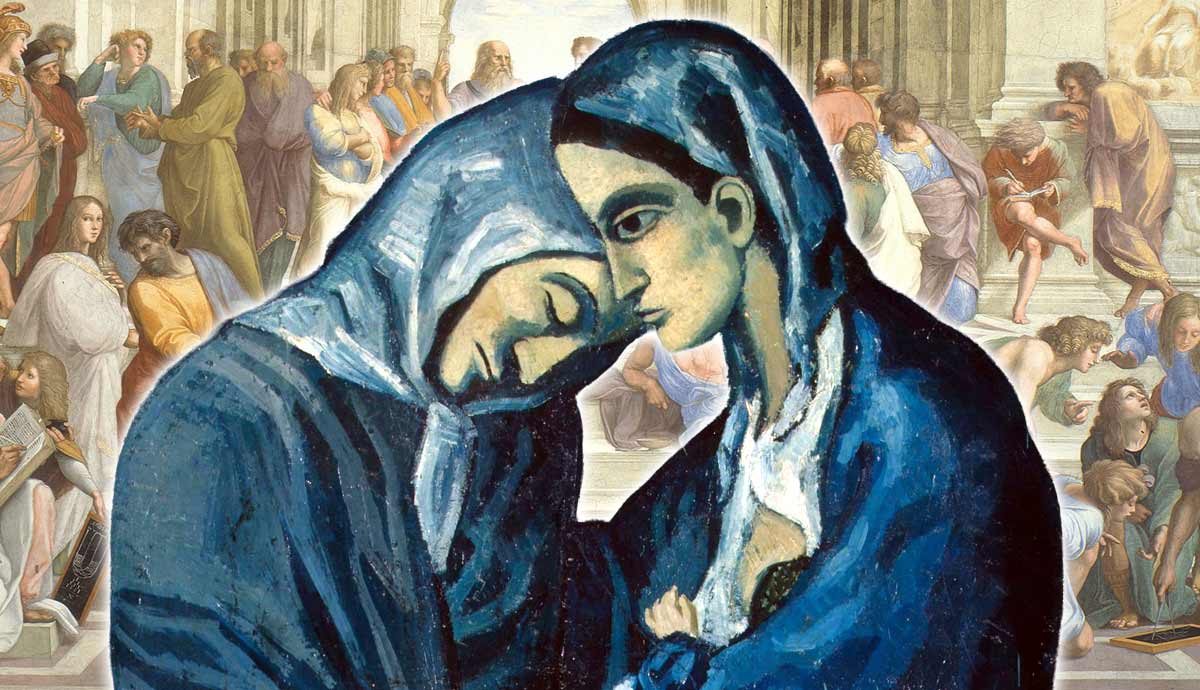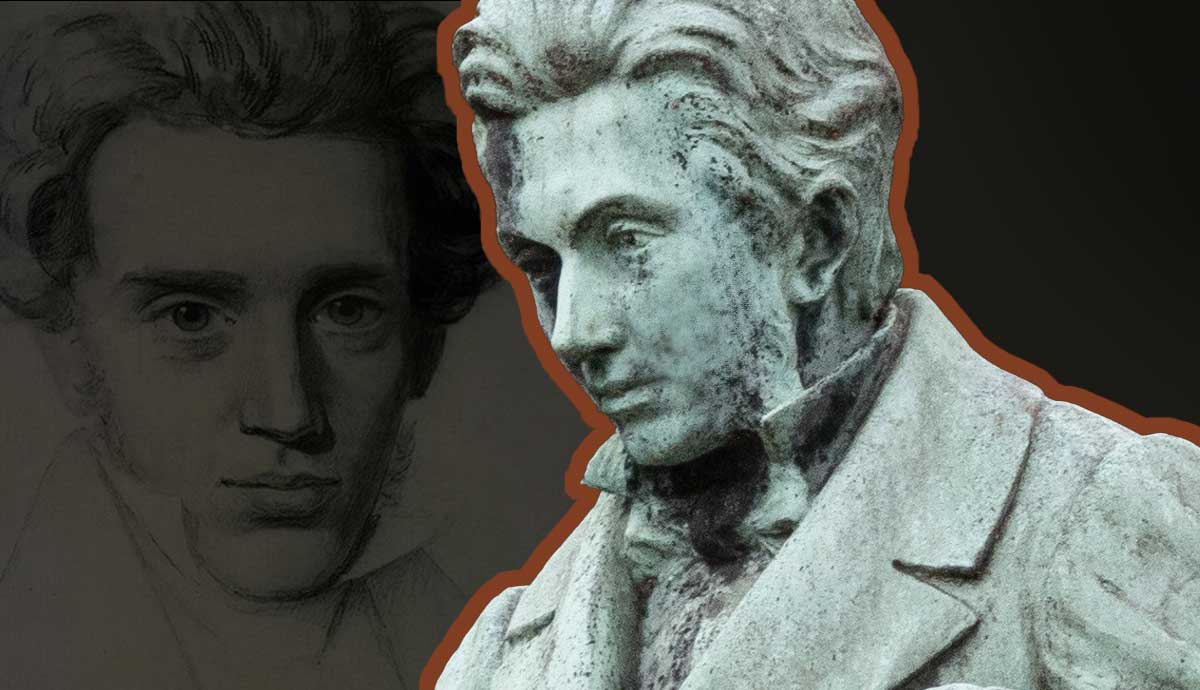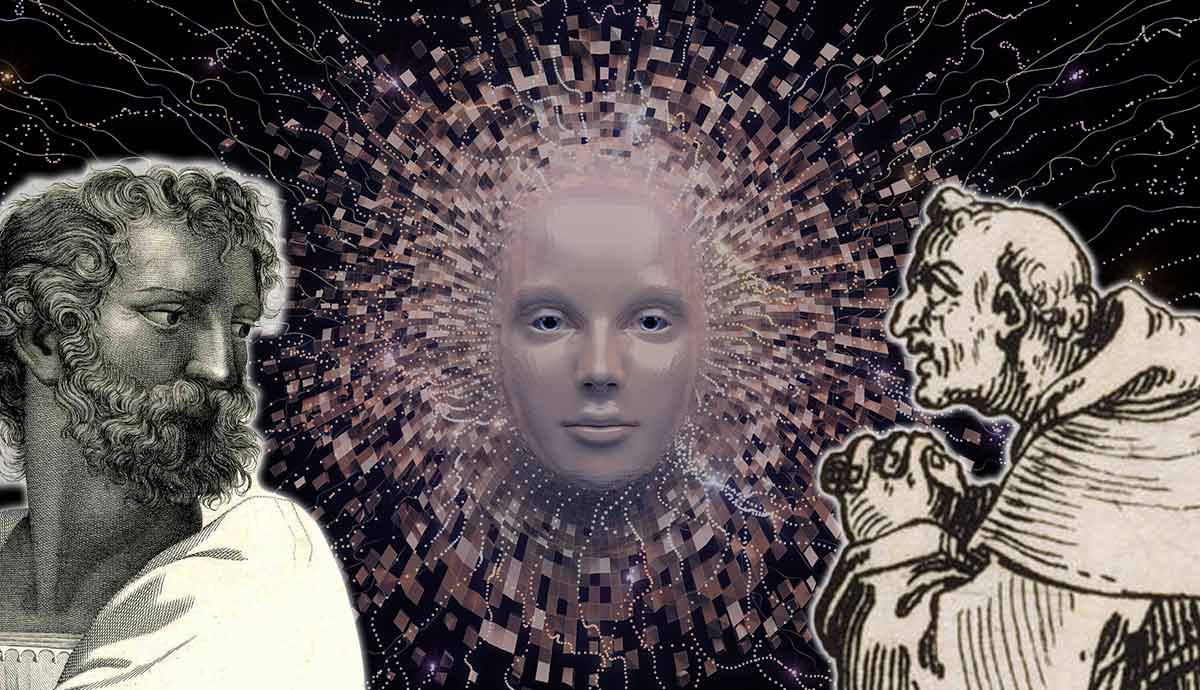
Loneliness is a feeling we all know: heavy, quiet, hard to escape sometimes. But what if this is not a burden, but a means for creativity? History has captured great art, music, and literature inspired by loneliness. From the star-filled sky of Van Gogh to Mary Shelley’s Frankenstein, solitude gave wings to incredible creativity. When turmoil reared its head and at moments when connection seemed to be but a dream, creativity became that lifeline, showing a way through the mire of silence. Let’s explore these works of art.
The Philosophy of Loneliness: Kierkegaard’s Reflection on the Self

The Danish philosopher Søren Kierkegaard looked upon loneliness not as something to fear but rather as a necessary path toward self-discovery. He says solitude is where we confront ourselves and fight life’s deepest questions. For Kierkegaard, loneliness wasn’t a void—it was a space to grow, reflect, and understand who we truly are.
In The Sickness Unto Death, Kierkegaard explored despair, a feeling experienced when one is not connected to one’s true self. He believed this can only happen when one isolates oneself from others and society.
According to his philosophy, loneliness should not be shunned but embraced, as this will reveal our authenticity and sense of direction.
Modern life perfectly reflects what Kierkegaard said. At every moment, the rattling of social media and hectic schedules cause us to lose contact with ourselves.
Solitude is when all the lost things come back to life. On a quiet evening, you can keep a journal or walk alone in nature. Clarity comes with pauses.
As Kierkegaard reminds us, loneliness is not nothing-it is a possibility. While leaning into solitude, we find strength and insight, transforming loneliness into the most potent force of self-discovery.
Turning Pain Into Art: Van Gogh and the Beauty of Vulnerability

Vincent van Gogh lived with heavy feelings of isolation and the darkest inner turmoil, yet the painter transformed his pain into wondrous art. His paintings are none other than a flow of emotion onto canvas, capturing moments of loneliness, longing, and hope.
For Van Gogh, art was a way of coping with and expressing his feelings, which were too vast to be contained by words.
Take the Starry Night, perhaps his most iconic work. Painted while he was in a mental asylum, it speaks to despair and beauty. The swirling skies and glowing stars almost seem to reach out, alive, embodying his longing for connection. It’s a masterpiece that reminds us even in darkness, there’s light.
Van Gogh’s letters to his brother Theo exposed his vulnerable mind. He poured out his struggles with loneliness, which fueled his creativity.
In one letter, he says, “What would life be if we had no courage to attempt anything?” This courage gave us Sunflowers and The Bedroom, which echo among people today.
Van Gogh teaches us that vulnerability is not weakness but raw, honest, and changing. In his work, he repeatedly reminds us that from pain can come beauty, and creativity can be a lifeline in lonely hours.
Existential Loneliness and Creativity: Sartre and Beauvoir’s Legacy

To Jean-Paul Sartre and Simone de Beauvoir, loneliness is part of the human condition. For them, loneliness is not just about solitude; it is a certain kind of freedom—but at a cost.
To them, real freedom is a matter of making up your mind in a world without meaning. Although this might appear to be some sort of isolation, it is important because it promotes innovation and originality.
Sartre’s novel Nausea deeply explores existential isolation. The protagonist, Roquentin, finds himself in a seemingly meaningless world, making him experience human life’s senselessness.
Nevertheless, he does not lose all his hopes and makes homemade decisions. This reflects a well-known view of Sartre, who claimed that solitude is a significant factor that forces one to utter a word, which means self-definition.
In She Came to Stay, Beauvoir raises the same issues as in The Outsider: love, freedom, and betrayal. In her characters, she tries to determine whether being alone can make one find out who they are, change them, and, therefore, have something to do with creativity.
As mentioned, the French philosopher postulated that one can only be said to be authentic once one daringly confronts one’s loneliness and has stood out.
Like them, their work reminds us that, though uncomfortable, loneliness is very rewarding and leads to great art. When we dare face our own company and tell society not to interfere with us, we can live freely and create our unique creations.
Literature as a Mirror: Mary Shelley’s Frankenstein

Mary Shelley’s Frankenstein is more than a gothic tale; it reflects her losses, isolation, and yearning for companionship. Written during the notorious Year Without Summer in 1816, it encapsulates personal loss and darkness, even literally.
This year, the volcanic eruption of Mount Tambora caused unseasonable weather conditions, which left Shelley confined indoors, enhancing her solitude. This depressed scenario of loneliness sparked her creativity.
Her novel tells the story of Victor Frankenstein, who gives life to a creature but abandons him into a life of rejection and loneliness. The monster’s plight reflects Shelley’s alienation.
After losing her mother and experiencing personal tragedies, Shelley channeled all her pain into the creature’s search for acceptance. In his anger, the monster longs for his company, a human wish that deeply resonates.
This isolation gave birth to several of the novel’s most sustained productions. Frankenstein speaks about alienation, what it does with characters, whether human or divine and what occurs once the connecting strings have been torn.
Yet creativity can burst forth like light even in bleak, dark hours of loneliness in confinement. Through her classic novel, Shelley shows that even being connected with fiction bridges a gap in understanding.
Music and Solitude: Beethoven’s Resilience in the Face of Loneliness

Beethoven transformed his struggle with hearing loss into beautiful music. Though he was losing his ability to hear, Beethoven poured his feelings of loneliness into composing.
Take Beethoven’s Ninth Symphony as an example. This piece was written after Beethoven had gone completely deaf. Yet it is full of hope and triumph, particularly in the famous “Ode to Joy” section. It reminds us all that creative genius can rise above personal darkness.
Moonlight Sonata is another great work by him that is worth considering. The haunting notes seem to reflect an ongoing emotional battle: imagine conversing with silence itself! When people listen, they can sense Beethoven’s pain (isolation) and ability to endure suffering.
Beethoven’s music continues to resonate with people dealing with loneliness. It reminds us that heartache doesn’t have to have the last word—it can be a prelude to something lovely.
His knack for transforming solitude into works of enduring beauty encourages us. We, too, can draw on inner pain and hardship to become stronger. Beethoven shows us that even when we feel most isolated, it is possible to create a connection that transcends words—or notes left unplayed.
Creativity as Healing: Lessons From Modern Movements

Loneliness appears to be multiplied in contemporary society due to the high speed of life and lack of connectivity. Nevertheless, several artists and writers today have proven that loneliness can be stimulating. According to them, through creative work, one can turn their own state into something very important and deeply inherent.
Consider the example of Yayoi Kusama, a famous Japanese artist. Her iconic polka dots and infinity rooms depict her endless fights with mental disorders and loneliness.
Kusama transforms isolation into a space for shared awe by presenting spectators with what she sees. In this sense, her work reminds us that art can unite our internal demons with the outside world.
Maggie Nelson’s The Argonauts is a great example of literature that delves deep into issues concerning one’s identity and interactions with others. The writer uses beautiful words to express her thoughts on separation and doubt, creating a story that will be understandable to all who have ever felt that being alone is meaningless.
Art is like an escape rope for isolated people. Journaling, painting, or any art can help someone deal with their feelings and see things better. This does not mean being right but being able to let it out.
From Kusama and Nelson, we learn that creativity is more than an instrument. It is a bridge that links us to other people and ourselves, even in our solitude.
So, What’s the Connection Between Loneliness and Creativity in Troubled Times?

Creativity is associated with being alone. It’s tough on one’s own sometimes, and certain people feel like that when they isolate themselves. But the truth is that during such moments, a person may best discover their identity.
Many historical creative personalities like painters, writers, and thinkers were known to use their alone time well.
Nevertheless, even today’s creative individuals experience loneliness. Consider Yayoi Kusama or Maggie Nelson. Their art reminds us that innovation allows us to adapt to an ever-changing environment while constructing our self-narratives.
Loneliness does not cut people off from each other, especially in difficult circumstances. This approach encourages unity through shared struggle. By turning to art for inspiration and expressing our unique selves, we can transform isolation into a hopeful means of improving ourselves.










